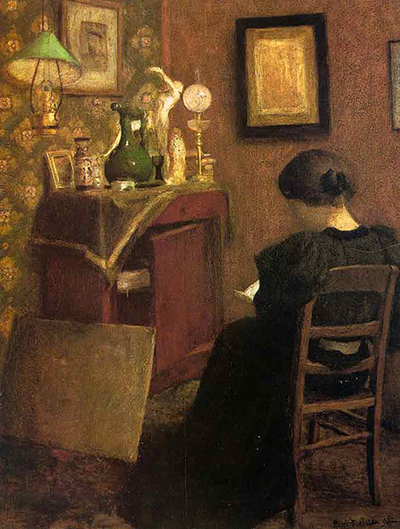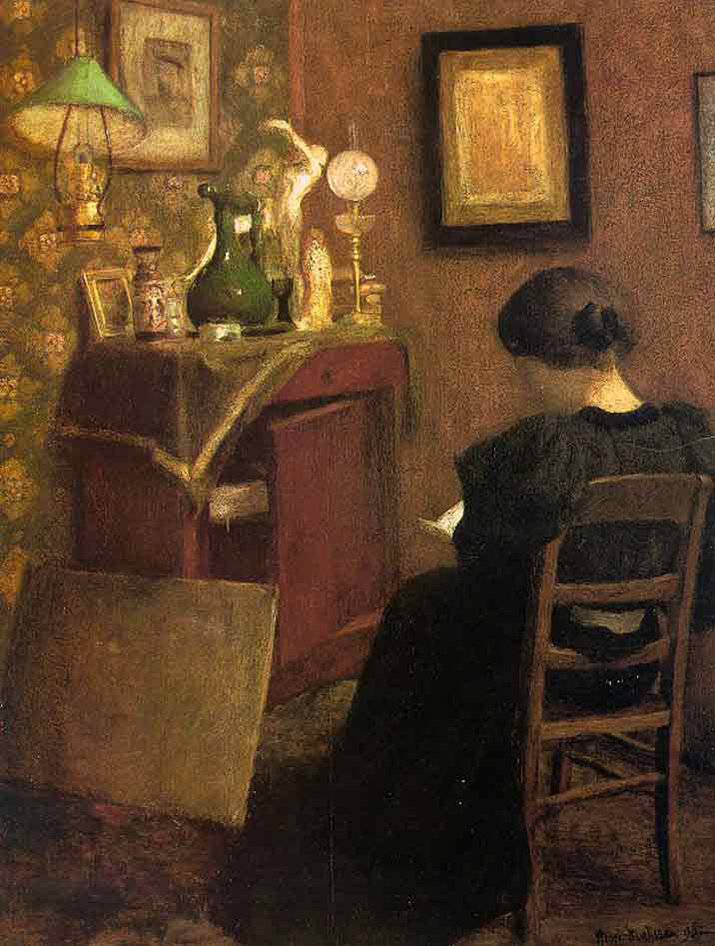Woman Reading is rare in the oeuvre of Henri Matisse in that it features a distinctly subdued colour palette, very much out of sync with his normally vivid work.
At first glance this could easily be from the career of James Abbott McNeill Whistler, bearing an uncanny resemblance to some of his most famous paintings such as The Artist's Mother or Symphony in White, No. 2: The Little White Girl. In fact this is purely a demonstration of Matisse's versatility as an artist, as well as the strong desire that he had to try different artistic approaches. The scene captures a young woman calming reading a book during a moment of peace in the corner of her room, perhaps an office. She sits to the right of the composition, whilst the left hand side features a variety of objects that sit upon her cupboard as well as some paintings on the wall. Lighting effects are kept to a minimum.
Matisse produced this scene in 1894, making it one of his earliest highlights. That explains the style, in that it was later on that he started to experiment with much brighter colour palettes, as tipified by his work within the Fauvist movement, which brought about the likes of Le Bonheur de Vivre (1906) and Woman with a Hat (1905). Even the most modern of artists would initially work within traditional methods as part of their early tutoring - understanding what had gone before in the previous centuries of art history was still an essential step to becoming artistically successful, even if the eventual signature style was actually much different. We can see the same in the work of artists like Picasso and Mondrian, whose early works were much more conventional as compared with their later phases of painting.
All that said, why this might not be the Matisse that we all know and love, there are still clear technical qualities to appreciate here, particularly in the classical elements of this room are communicated to the viewer. In this example, the subdued colours actually make complete sense with regards the content being captured. This important artwork from his earlier years can now be found at the Le Cateau-Cambrésis, Musée Matisse. This institution is, naturally, an excellent venue from which to learn and appreciate this artist's work. They have attempted to provide a comprehensive survey of his entire career, encompassing different styles and mediums across the many decades of work. Whilst comparisons have been made with the work of Whistler, it is believed that other artists such as Manet and Poussin were actually influencing Matisse at the time of this painting. He would also collect a large amount of art during his lifetime and so was always looking for new ideas, so it would be wrong just to pinpoint one or two artists as his sources of inspiration were much wider than that.





